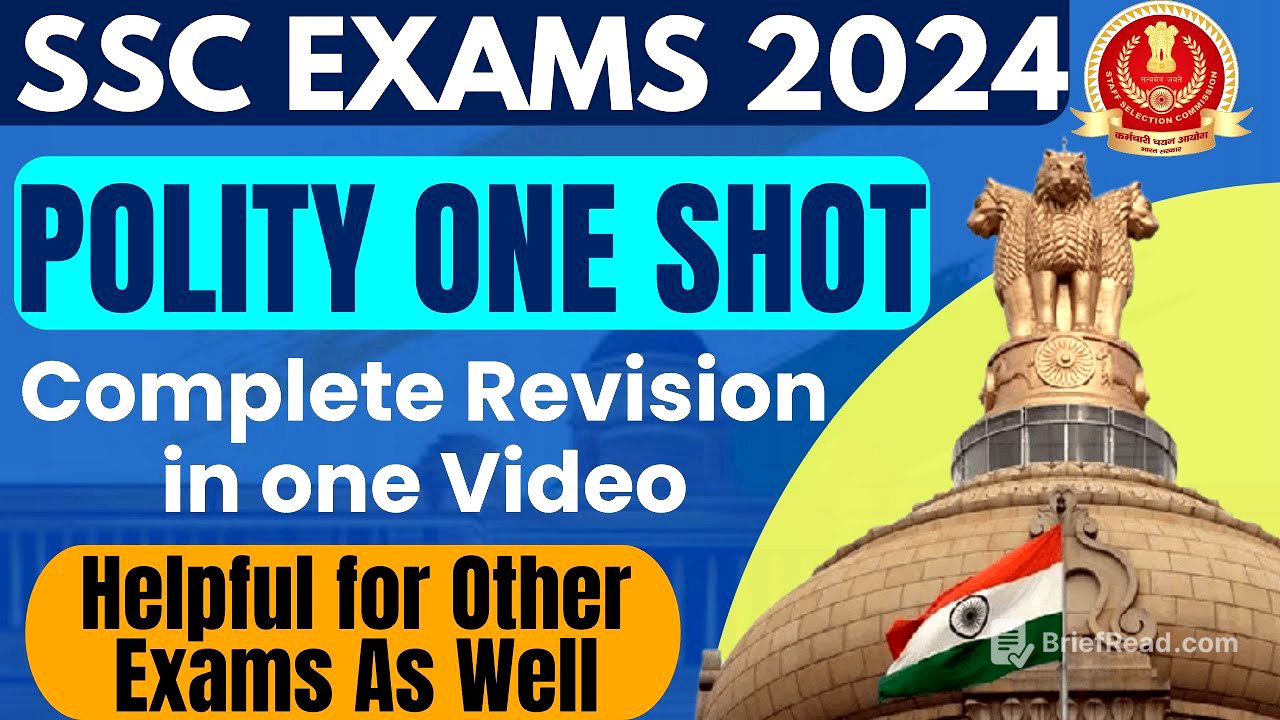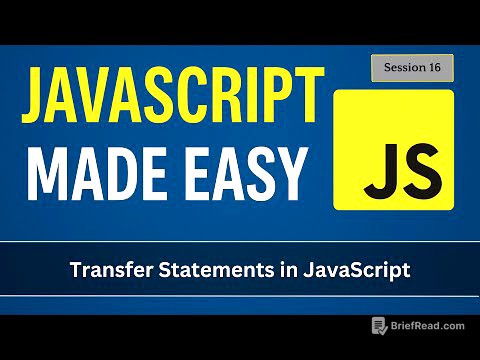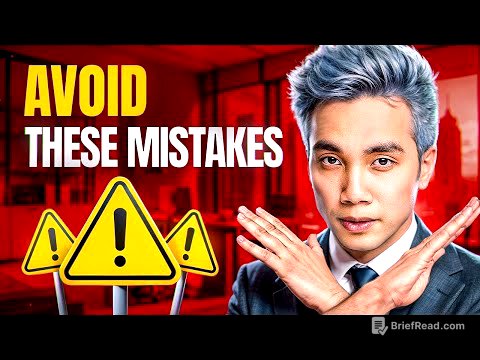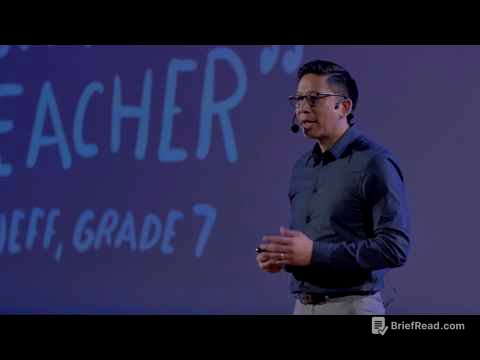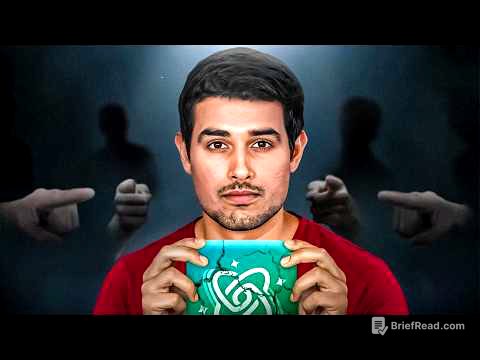TLDR;
This YouTube video by PARMAR SSC provides a comprehensive lecture on Indian Polity, focusing on key aspects relevant to SSC exams. The lecture covers the Parliament, President, Vice President, Supreme Court and CAG.
- Covers important articles and concepts.
- Provides tricks to remember articles.
- Focuses on exam-relevant information.
Introduction [0:24]
The lecture aims to comprehensively cover Indian Polity, similar to a previous lecture on Geography. The content is designed for both revision and initial learning, with an emphasis on exam-oriented questions. The lecture promises to be thorough and relevant, focusing on important topics and avoiding irrelevant details.
Part 5 of the Constitution: The Union [2:54]
The lecture begins with Part 5 of the Constitution, which deals with the Union. Part 5 is divided into five chapters: the Union Executive, Parliament, Ordinance, the Supreme Court, and the Comptroller and Auditor General (CAG). The lecture starts with Chapter Two, focusing on the Parliament, with the intention of covering the chapters in a specific order for better understanding.
Article 79: Composition of Parliament [4:31]
Article 79 states that there shall be a Parliament of the Union, comprising the Lok Sabha, Rajya Sabha, and the President. The Lok Sabha is the lower house (House of the People), and the Rajya Sabha is the upper house (Council of States). The President is an integral part of the Parliament because no bill can become an Act without the President's assent.
Article 80: Structure of Rajya Sabha [6:11]
The Rajya Sabha can have a maximum of 250 members, divided into 238 elected members and 12 nominated members. The 238 members are elected from states and Union Territories, while the President nominates 12 members from the fields of Literature, Science, Art, and Social Service (LISAS). The first session of the Rajya Sabha was held on May 13, 1952. The method of election is proportional representation with a single transferable vote. Uttar Pradesh has the highest representation in the Rajya Sabha. Delhi and Puducherry are the only two UTs with representation due to their Legislative Assemblies.
Article 81: Composition of Lok Sabha [10:02]
The Lok Sabha can have a maximum of 550 members. Currently, there are 543 members, with 530 coming from the states and 20 from the Union Territories. Elections are direct. The nomination of two Anglo-Indians by the President has been ended through the 104th Amendment Act. This amendment also increased the representation of SC and ST. The first session of the Lok Sabha was held on 13th May 1952. The Lok Sabha is also known as the House of the People or the Lower House and is considered a temporary house.
Article 82: Adjustments After Each Census [12:11]
Article 82 mandates adjustments after each census to ensure parity between states and constituencies. This involves setting up a Delimitation Commission, which has been formed four times to date. The 84th Amendment froze this process until 2026, based on the 2001 census.
Article 83: Duration of the Houses [15:31]
The Rajya Sabha is a permanent house with no fixed term, with one-third of its members retiring every two years, and each member has a tenure of six years. The Lok Sabha has a term of five years but can be dissolved prematurely or extended during a national emergency by one year at a time.
Article 84: Qualification for Membership of Parliament [18:53]
To qualify for membership in Parliament, one must be a citizen of India, subscribe to an oath, and be at least 25 years old for the Lok Sabha and 30 years old for the Rajya Sabha.
Article 85: Sessions of Parliament, Prorogation and Dissolution [19:23]
Article 85 discusses the sessions of Parliament, prorogation, and dissolution. The maximum gap between two sessions cannot be more than six months, implying that there must be at least two sessions. The President summons the sessions. Prorogation is done by the President after the presiding officer announces the end of a session. Dissolution, a significant term, means the end of the Lok Sabha, which can be premature or at the end of its term, and is also done by the President. Adjournment, done by the presiding officer, means temporarily suspending a sitting, like adjourning until the next day.
Adjournment Motion [24:04]
An adjournment motion requires the approval of 50 members and can only occur in the Lok Sabha due to the risk of the government falling. It is brought up to seek attention on an important matter. The presiding officer can adjourn a session, while prorogation, which ends the session, is done by the President.
Article 86 & 87: President's Address [25:50]
The President has the power to send messages to either house of Parliament. Article 87 refers to the special address by the President at the commencement of the first session after each general election and the first session of each year, outlining the government's policies and actions. This address is followed by a Motion of Thanks, which, if not passed, can lead to the government falling.
Article 88: Rights of Ministers and Attorney General [28:05]
Ministers and the Attorney General have the right to speak in any house but can only vote in their respective house. The Attorney General can speak in both houses but cannot vote in either.
Article 89: Chairman and Deputy Chairman of Rajya Sabha [29:02]
The Vice President of India is the ex-officio Chairman of the Rajya Sabha. The term ex-officio means that whoever becomes the Vice President automatically becomes the Chairman of the Rajya Sabha. The Deputy Chairman is elected by the Rajya Sabha.
Article 90: Vacation and Resignation of Deputy Chairman [30:14]
A Deputy Chairman's seat can become vacant if they cease to be a member of the Rajya Sabha, resign, or are removed. Resignation is submitted to the Chairman of the Rajya Sabha, and removal requires an effective majority vote by the Rajya Sabha.
Article 91 & 92: Power of the Deputy Chairman and Restrictions [31:24]
The Deputy Chairman can act as Chairman in the Chairman's absence or if the Chairman's seat is vacant. A panel of vice-chairpersons, comprising six members, is designated to run the house in the absence of both the Chairman and Deputy Chairman. However, this panel cannot preside if both positions are vacant; in such cases, the President will appoint someone. When a resolution for their removal is under consideration, neither the Chairman nor the Deputy Chairman can preside.
Article 93: Speaker and Deputy Speaker of Lok Sabha [35:27]
The Lok Sabha elects its Speaker and Deputy Speaker from within its members. The President decides the date of the Speaker's election, while the Speaker determines the date for the Deputy Speaker's election.
Article 94: Vacation, Resignation and Removal of Speaker and Deputy Speaker [35:49]
Vacation of seats can occur due to various reasons. The Speaker hands over the power to the Deputy Speaker and vice versa. Removal of both requires an effective majority.
Panel of Chairpersons in Lok Sabha [38:27]
A panel of chairpersons exists in the Lok Sabha, similar to the Rajya Sabha. If both the Speaker and Deputy Speaker positions are vacant, the President will appoint a member to preside.
Protem Speaker [40:14]
Before the first session of the new Lok Sabha, a Protem Speaker is appointed by the President to administer the oath to newly elected members. The Protem Speaker, usually the senior-most member, is a temporary position.
Article 100: Voting and Quorum [41:40]
Article 100 discusses voting and quorum in the House. The presiding officer can vote only in the case of a tie, known as a casting vote. The quorum is one-tenth of the total members; if this is not met, the presiding officer will adjourn the House.
Article 101: Vacation of Seats [46:27]
A seat may be vacated if a member is elected to two seats and does not specify which one to retain, or if a member becomes both an MP and an MLA.
Article 102: Disqualifications for Membership [48:23]
Disqualifications for membership include holding an office of profit, being of unsound mind, being an undischarged insolvent, or not being a citizen of India. The Representation of People Act of 1951 also mentions disqualifications, such as imprisonment for two years.
Article 103: Decision on Questions as to Disqualifications for Membership [50:37]
The President, after consulting with the Election Commission, decides on disqualifications for membership.
Article 105: Powers, Privileges, etc., of Members of Parliament [51:14]
Members of Parliament have freedom of speech and are not legally liable in court for what they say or do in Parliament. This differs from the UK, where MPs have legal responsibilities. The Indian Parliament is not sovereign, and its laws are subject to judicial review. These privileges extend to all persons who have the right to speak in Parliament, such as the Attorney General and CAG, but not to the President. Civil proceedings cannot be taken against MPs 40 days before, during, or 40 days after a session.
Article 107: Provisions as to introduction and passing of bills [54:28]
Ordinary bills can originate in either house of Parliament. If a bill passes in one house and is rejected or amended by the other, or if no action is taken for six months, a deadlock is created.
Article 108: Joint Sitting [58:28]
In case of a deadlock, the President summons a joint sitting of both houses, presided over by the Speaker of the Lok Sabha. The bill is passed by a simple majority. Joint sittings have been called three times in India.
Article 109: Special procedure with respect to Money Bills [1:01:05]
Money Bills can only originate in the Lok Sabha with the prior recommendation of the President. The Rajya Sabha has only recommendatory powers and must return the bill within 14 days.
Article 110: Definition of "Money Bill" [1:02:57]
A Money Bill deals with the imposition, abolition, remission, alteration, or regulation of taxes. The Speaker of the Lok Sabha certifies a bill as a Money Bill, and this decision is final.
Article 111: Assent to Bills [1:06:01]
The President gives assent to bills, but can exercise veto power: absolute veto (direct rejection), suspensive veto (returning the bill for reconsideration), and pocket veto (no response). The President cannot use the suspensive veto for Money Bills or any veto for Constitution Amendment Bills.
Article 112: Annual Financial Statement (Budget) [1:11:55]
Article 112 refers to the Annual Financial Statement, which is the budget. It includes estimated receipts and expenditure. The budget process involves presentation, discussion, scrutiny by standing committees, voting on demand for grants, and passing the Appropriation Bill.
Consolidated Fund of India (CFI) [1:14:24]
The Consolidated Fund of India (CFI) is where all tax money is accumulated. It has two types of expenditure: charged expenditure (non-votable) and expenditure made from the CFI (votable). Charged expenditure includes salaries of high officials, ensuring their independence.
Demand for Grant [1:16:26]
The government, through the President, presents a Demand for Grant, seeking approval for expenditure. Voting is conducted in the Lok Sabha. Cut motions can be passed to reduce the demand: policy cut (reduce to Re 1), token cut (reduce by Rs 100), and economy cut (lump sum reduction).
Appropriation Bill [1:21:17]
The Appropriation Bill allows the government to withdraw money from the Consolidated Fund of India. The Contingency Fund of India, in the hands of the President, is used for unforeseen expenditures.
Article 115 & 116: Different Types of Grants [1:22:31]
Additional grants, supplementary grants, and token grants are different types of grants that may be approved when the ministry needs extra money.
Article 117: Financial Bill [1:23:27]
Financial Bills are of two types: 117(1), which is like a Money Bill and can only originate in the Lok Sabha with the President's recommendation, and 117(3), which is treated as an ordinary bill.
Article 118: Rules of Procedure [1:24:30]
Each house lays down its own rules of procedure.
Parliamentary Tools: Question Hour and Zero Hour [1:24:50]
Question Hour, from 11 AM to 12 PM, is where members can ask questions to ministers. There are three types of questions: starred, unstarred, and short notice questions. Zero Hour, from 12 PM to 1 PM, is where the agenda for the day is decided.
Article 120: Language to be Used in Parliament [1:30:26]
Hindi and English can be used in Parliament.
Article 121 & 122: Restrictions on Discussion in Parliament [1:31:23]
Article 121 restricts discussion in Parliament about court proceedings or the conduct of judges. Article 122 states that courts cannot inquire into the proceedings of Parliament.
Article 79: By-Cameral Parliament [1:34:03]
Article 79 provides for a by-cameral Parliament in India.
No-Confidence Motion [1:34:50]
A no-confidence motion, if passed in the Lok Sabha, requires the Council of Ministers to resign. It can be moved against the entire Council of Ministers and does not require stating reasons.
Joint Seating [1:38:11]
The Speaker of the Lok Sabha presides over a joint seating of both houses.
Parliamentary Committees [1:38:31]
Parliamentary committees are of two types: permanent (standing committees) and temporary (ad hoc committees). Financial committees include the Public Accounts Committee, Estimates Committee, and Committee on Public Undertakings.
Financial Committees: Public Accounts Committee, Estimates Committee, and Committee on Public Undertakings [1:39:34]
These committees share similarities such as a one-year tenure for members and proportional representation in selection. Differences include the number of members and their origin (Lok Sabha or Rajya Sabha).
Departmental Related Standing Committees [1:43:15]
There are 24 Departmental Related Standing Committees, with 31 members each.
Article 123: Ordinance Power of the President [1:46:03]
Article 123 grants the President ordinance-making power during the recess of Parliament. The ordinance has the same force as an Act of Parliament but must be approved by Parliament within six weeks of its reassembly.
Chapter One: The Union Executive [1:48:48]
The Union Executive includes the President, Vice President, Prime Minister, Council of Ministers, and Attorney General.
Article 52: The President of India [1:50:05]
Article 52 states that there shall be a President of India, who is the head of the Indian Union and the supreme commander of all defense forces.
Article 53: Executive Power of the Union [1:50:47]
Article 53 vests the executive power of the Union in the President.
Article 54: Election of the President [1:51:16]
The President is elected indirectly through an electoral college comprising elected MPs and MLAs. Nominated members do not participate.
Article 55: Manner of Election of the President [1:52:09]
The election is conducted through proportional representation with a single transferable vote. A quota must be secured to win the election.
Article 56: Term of Office of the President [1:53:24]
The President's term is five years. The President gives the resignation to the Vice President.
Article 57: Eligibility for Re-election [1:54:02]
The President is eligible for re-election any number of times.
Article 58: Qualifications for Election as President [1:54:15]
Qualifications include being a citizen of India, being 35 years old, and being qualified to be elected as a member of the Lok Sabha.
Article 59: Conditions of President's Office [1:55:25]
The President must not be a member of any house of Parliament or state legislature.
Article 60: Oath or Affirmation by the President [1:56:16]
The Chief Justice of India (CJI) administers the oath of office to the President.
Article 61: Procedure for Impeachment of the President [1:56:41]
The President can be impeached for violation of the Constitution. The process can start in either house of Parliament with the support of a specified number of members.
Impeachment Process [1:58:35]
The impeachment process involves all MPs, including elected and nominated members. The process requires a special majority in both houses.
Article 62: Time of Holding Election to Fill Vacancy in the Office of President [1:59:36]
If the President's seat becomes vacant, an election must be held within six months. The Vice President acts as President until a new President is elected.
Trick to Learn the Articles of President [2:00:38]
A trick to remember the articles is "Prem on Time TQ" or "Coca Dayo Dasham".
Article 63: The Vice-President of India [2:03:53]
Article 63 states that there shall be a Vice-President of India.
Article 64: The Vice-President to be ex-officio Chairman of the Council of States [2:04:00]
The Vice-President is the ex-officio Chairman of the Rajya Sabha.
Article 65: The Vice-President to act as President or to discharge his functions during casual vacancies in the office, or during the absence, of President [2:04:20]
The Vice-President acts as President in the President's absence or if the President's seat is vacant.
Election of Vice-President [2:04:34]
The Vice-President is elected indirectly through proportional representation with a single transferable vote by all members of Parliament.
Article 67: Term of Office of Vice-President [2:05:09]
The term of office is five years.
Article 69: Oath or Affirmation by the Vice-President [2:05:45]
The President administers the oath to the Vice-President.
Article 71: Matters relating to, or connected with, the election of a President or Vice-President [2:06:21]
The Supreme Court handles any disputes related to the election of the President or Vice-President.
Article 72: Power of President to grant pardons, etc., and to suspend, remit or commute sentences in certain cases [2:07:10]
Article 72 discusses the President's pardoning powers.
Pardoning Power of President and Governor [2:08:35]
The Governor cannot pardon death sentences or in cases of martial law. The President's pardoning power is in Article 72, while the Governor's is in Article 161.
Pardoning Power: Definitions [2:10:04]
- Pardon: Complete forgiveness.
- Commute: Change in the form of punishment.
- Remission: Change in the duration of punishment.
- Respite: Reduction in punishment due to health reasons.
- Reprieve: Temporary hold on punishment.
Article 73: Extent of executive power of the Union [2:12:43]
Article 73 defines the extent of the executive power of the Union.
Article 74: Council of Ministers to aid and advise President [2:15:14]
There shall be a Council of Ministers headed by the Prime Minister to aid and advise the President. The 42nd Amendment made this advice binding, but the 44th Amendment allows the President to return the advice once for reconsideration.
Prime Minister: Real Head of Government [2:17:35]
The Prime Minister is the real (de facto) head of government, while the President is the nominal (de jure) head.
Article 75: Other provisions as to Ministers [2:18:37]
The Prime Minister is appointed by the President, and other ministers are appointed by the President on the Prime Minister's advice. Ministers hold office during the pleasure of the President.
Collective Responsibility [2:20:53]
The Council of Ministers is collectively responsible to the Lok Sabha.
Oath of Secrecy [2:21:54]
Ministers take an oath of secrecy.
Membership of Parliament [2:22:05]
A minister must be a member of Parliament within six months of appointment.
Maximum Strength of Council of Ministers [2:23:20]
The 91st Amendment states that the maximum strength of the Council of Ministers cannot exceed 15% of the Lok Sabha's total strength.
Disqualification on Grounds of Defection [2:23:58]
Any member of Parliament disqualified on the grounds of defection shall cease to be a minister.
Defection [2:24:45]
Defection is mentioned in the 10th Schedule of the Constitution. Disqualification can occur if a member violates the whip's directions or if an independent member joins a political party.
Leader of the House [2:26:51]
The Prime Minister is the Leader of the House.
Article 76: Attorney General of India [2:28:07]
The Attorney General is the highest law officer of the country, advising the government on constitutional matters.
Attorney General: Qualifications and Restrictions [2:29:28]
The Attorney General should be qualified to be appointed as a judge of the Supreme Court and can do private practice.
Solicitor General [2:30:43]
The Solicitor General assists the Attorney General.
Advocate General [2:31:01]
Each state has an Advocate General, who is the highest law officer of the state.
Article 77: Conduct of Business of the Government of India [2:31:27]
All executive actions are taken in the name of the President.
Article 78: Duties of Prime Minister as respects the furnishing of information to President, etc [2:32:21]
The Prime Minister acts as a linkage between the Council of Ministers and the President.
Rank of Vice President [2:33:27]
The Vice President holds the second highest office in the country.
Qualifications for Vice President [2:34:27]
To be eligible for the post of Vice President, one must be qualified to be a member of the Rajya Sabha.
First Vice President of India [2:35:31]
Dr. Sarvepalli Radhakrishnan was the first Vice President of India.
Removal of Vice President [2:35:37]
The Constitution does not provide the grounds on which the Vice President can be removed.
Article 124: Establishment and constitution of Supreme Court [2:36:52]
Article 124 establishes the Supreme Court.
First Session of Supreme Court [2:37:24]
The first session of the Supreme Court was held on January 28, 1950.
Composition of Supreme Court [2:37:40]
The Supreme Court consists of a Chief Justice of India (CJI) and 33 other judges.
Appointment of Judges [2:38:08]
The President makes the appointment of judges.
Qualifications for Appointment of Judges [2:38:26]
To be appointed as a judge, one must be a citizen of India and have been a judge in a High Court for five years or an advocate in a High Court for ten years, or be a distinguished jurist in the opinion of the President.
Removal of Judges [2:40:11]
Judges can be removed for proven misbehavior or incapacity. The process involves a removal resolution in either house, supported by a specified number of members, and passage by a special majority in both houses.
Article 129: Supreme Court to be a court of record [2:42:52]
The Supreme Court acts as a court of record, maintaining all its judgments for future reference.
Article 130: Seat of Supreme Court [2:47:15]
Delhi is the seat of the Supreme Court, but the CJI can ask the President to declare any other place as the seat.
Article 131: Original jurisdiction of the Supreme Court [2:47:53]
The Supreme Court has original jurisdiction in disputes between the Center and States.
Appellate Jurisdiction [2:48:53]
The Supreme Court has appellate jurisdiction in
